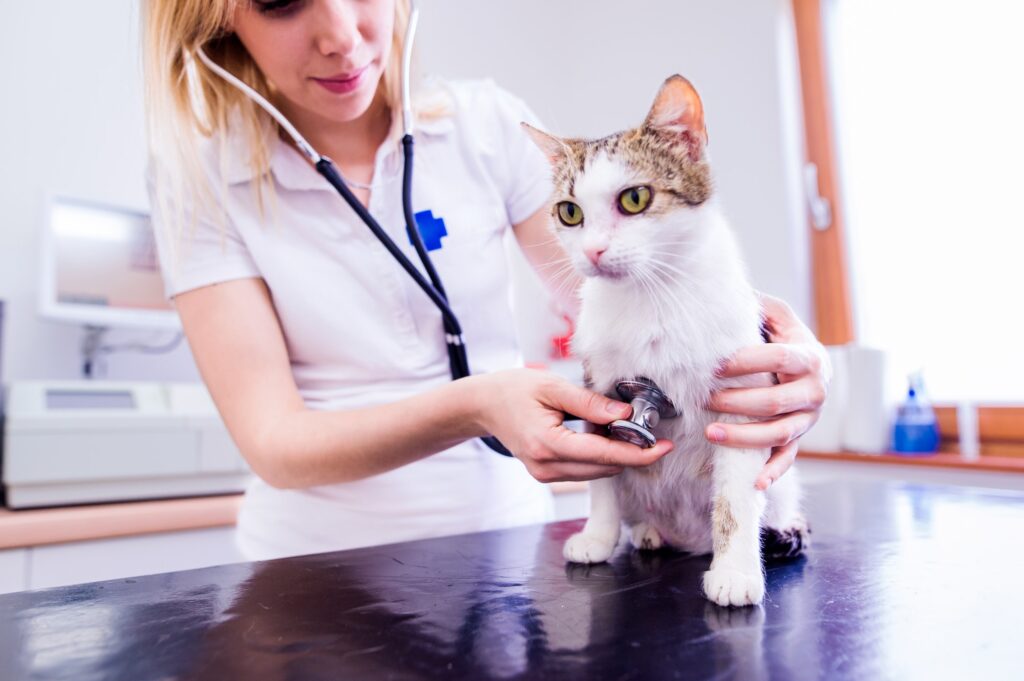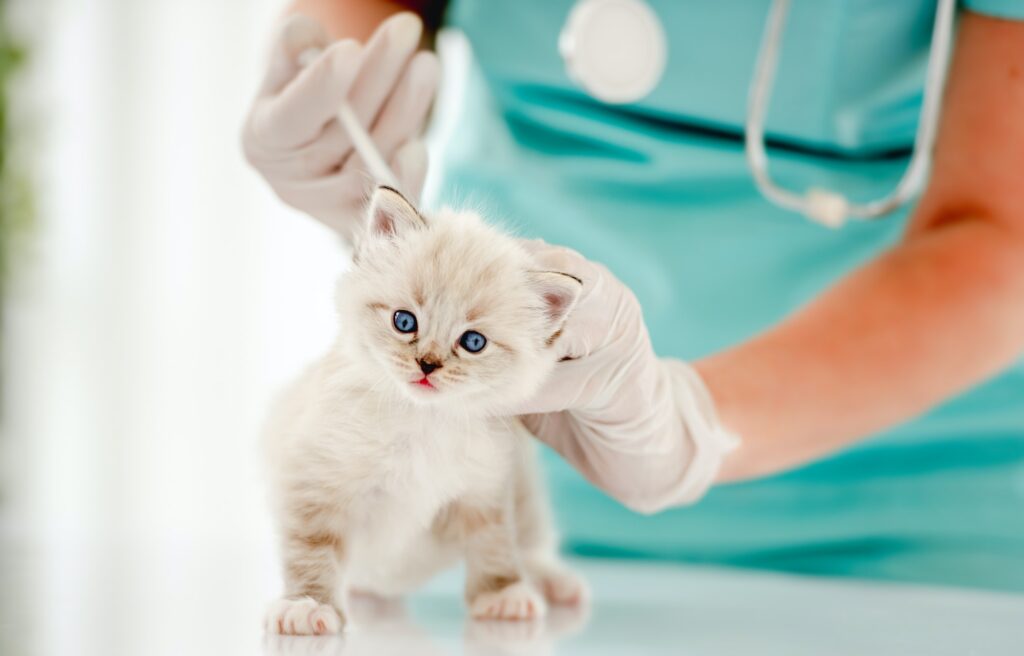A few days ago, I came across a video on TikTok that was both heartbreaking and saddening.
A cat was happily sitting on a chair, grooming itself. Suddenly, it seemed as if the Grim Reaper had grabbed its throat. The cat let out a mournful howl, its body stiffened, and it fell backward.
After falling, its limbs started twitching and groaning non-stop. It struggled for a few seconds before its body stopped moving altogether. Its head was up, and its limbs hung down, limp on the chair.
Just like that, a vibrant life vanished from this world.

Although this topic is difficult to discuss, I want to sound the alarm for everyone today – the causes and prevention of sudden cat death.
Perhaps one second they are lively and bouncing around, and the next, they may collapse and never get up again. Don’t think this has nothing to do with us, because we never know which will come first – tomorrow or an accident.
Several significant causes of sudden cat death:
Heart disease (of utmost importance! Many sudden cat deaths are due to heart disease!)
Cat and dog heart diseases can be divided into two main categories: congenital heart disease and acquired heart disease.
Hypertrophic cardiomyopathy (HCM) is the most common heart disease in cats.

How terrifying is hypertrophic cardiomyopathy?
It can strike any cat, regardless of time or place. Heart disease can directly lead to cat death!
Feline urinary obstruction
Feline urinary obstruction (UO) is an acute urinary obstruction. Although any cat can develop this disease, it is most common in male cats.
Typical symptoms are straining and crying during urination. If left untreated, most cats will die within 72 hours.

Diagnosing this disease is simple, but the difficulty lies in detecting the problem early.
The most apparent symptom is the cat crying and struggling to urinate when assuming a urination posture. Cats may frequently go in and out of the litter box and may urinate outside the litter box.
So, if you notice any abnormal behavior in your cat (especially male cats) while urinating, take them to the hospital immediately.
Also, feline urinary tract diseases are prone to recurrence, such as struvite crystals and stones. Under a veterinarian’s guidance, consider using prescription urinary tract food.
For cats with lower urinary tract symptoms, struvite crystals can be seen in the urine during microscopic examination.

Chronic kidney disease
Chronic kidney disease (CKD) is more common in older cats but can occur at any age.
Early-stage CKD may be accompanied by weight loss, decreased appetite, increased urination, and lethargy. However, if the symptoms are not obvious or detected promptly, the cat may die quickly from exhaustion during the late stage of the disease.

That’s why annual check-ups are crucial, especially for cats aged 7 and above.
Chronic kidney disease is divided into four stages. It can now be detected during stage 1, allowing for early detection, treatment, and control of the disease’s progression.
Chronic kidney disease in cats may be related to the following factors:

Long-term dietary habits of the cat, such as high phosphorus diets and low potassium levels, can cause chronic kidney disease.
It may also be related to genetic factors (congenital kidney maldevelopment), age, and living environment.
The occurrence of some diseases may also lead to chronic kidney disease in cats, such as hypertension and dental diseases.
If a cat is diagnosed with chronic kidney disease, we need to provide them with a scientifically balanced diet to reduce the burden on their kidneys.

It is recommended to feed cats a low-phosphorus, high-quality protein diet. Prescription food should be given during illness, and cats with a decreased appetite may try more palatable prescription wet food.
PS: Based on individual cat differences, targeted treatment should be carried out under a veterinarian’s guidance.
How should we deal with sudden cat death?
In fact, when it comes to the question of “how to avoid,” each of us should have an idea.
What we can do beforehand is to provide scientific feeding for our cats.
For example, proper nutrition, regular immunizations and deworming, drinking more water, and maintaining a healthy weight.
However, these preventive measures can only reduce the risk of sudden illness and death to some extent, and they won’t completely eliminate the danger.
Just like a person who is initially healthy and can climb eight floors without panting, they might suddenly be diagnosed with a severe illness. We never know when disaster may strike.
Therefore, the most effective method we can do is— “regular check-ups.”
Many diseases can be detected early through check-ups during their initial stages.

For example, heart disease can be easily detected by a simple heart auscultation, checking for normal heart rhythm and any abnormal sounds.
Likewise, a urinary system examination can be done by inspecting the urinary opening and surrounding tissues (scrotum, vaginal opening, anal glands, etc.) for inflammation, discharge, abnormal morphology, or growth.
Chronic kidney disease can be detected through tests such as blood urea nitrogen, creatinine, or SDMA. Early detection allows for prompt treatment, preventing further deterioration.

In summary, regular check-ups and proper care can help detect and treat potential health issues early, increasing the chances of maintaining a healthy and happy life for our beloved cats.
The regular check-ups normally include:
Weight Measurement
An essential data for long-term pet health management (abnormal weight gain or loss requires immediate clinical examination and management). In addition, weight is a basic piece of information needed for drug dosage calculation, evaluating weight loss effects, and many other aspects.
Abdominal Palpation
Examining for any abnormalities in organ shape or texture, presence of growths, or pain.
Body Condition Scoring Assessment:
Understanding the animal’s body condition, whether overweight or underweight to different degrees.
Nutritional Assessment
A nutritional history investigation – determining if feeding and nutritional supplement methods are appropriate based on the pet’s previous diet, snacks, and nutritional supplements.
Heart Auscultation
Checking for normal heart rhythm and any murmurs. Approximately 10% of dogs in a typical community have heart diseases (Freeman, 2010), while 90% of cats with acquired heart diseases have cardiomyopathy (Fox, 1999). Auscultation is one of the effective screening methods.
Musculoskeletal Examination
Checking for muscle loss (lean body mass) and joint or skeletal abnormalities. Among canine and feline arthritis cases, 52% of dogs and 41% of cats are caused by being overweight or obese (Banfield Pet Hospital, 2019). Obesity can mask the appearance of muscle loss. This examination is also crucial for assessing muscle mass in older animals, as chronic kidney disease and heart disease may cause muscle loss in later stages.
Urinary System External Examination
Inspecting the urinary opening and surrounding tissues (scrotum, vaginal opening, anal glands, etc.) for inflammation, discharge, abnormal morphology, or growth.
External Ear Canal Examination
Checking the external ear canal for any morphological changes, ulcers, discharge, inflammation, parasites, or foreign bodies.
Skin and Fur
Wood’s lamp can assist in detecting fungal infections. Breed, environment, age, nutritional status, and complications can all affect the skin health of dogs and cats (Lund et al., 2005, Scott et al., 2001).
Superficial Lymph Node and Thyroid Gland Palpation
Examining for enlarged lymph nodes and thyroid glands. Enlarged lymph nodes may indicate infection (fungal, bacterial, viral), potential tumors (lymphocytic leukemia, lymphoma, etc.), trauma, immune-mediated diseases, poisoning, and many other possibilities. Abnormal thyroid palpation may be caused by thyroid dysfunction or tumors.
Fecal Routine
Examining the stool’s shape, texture, and contents provides valuable information for screening digestive system inflammation, bleeding, bacterial, and parasitic infections.
Body Temperature Measurement
Checking for elevated or lowered body temperature. Infections from parasites, bacteria, fungi, inflammation, tumors, endocrine diseases, neurological disorders, and various other situations can lead to elevated body temperature, while low body temperature is related to many severe disease states, such as shock.

Our feline companions bring joy, love, and laughter into our lives, and it is our responsibility to ensure their well-being and happiness. As pet owners, we must educate ourselves on the potential risks and health issues our cats may face, take preventive measures, and seek professional guidance when necessary. By providing proper nutrition, regular check-ups, and a loving environment, we can help our cats live long, healthy, and happy lives. Remember, the bond we share with our pets is precious and irreplaceable – let’s cherish every moment and do our best to protect them from harm.












